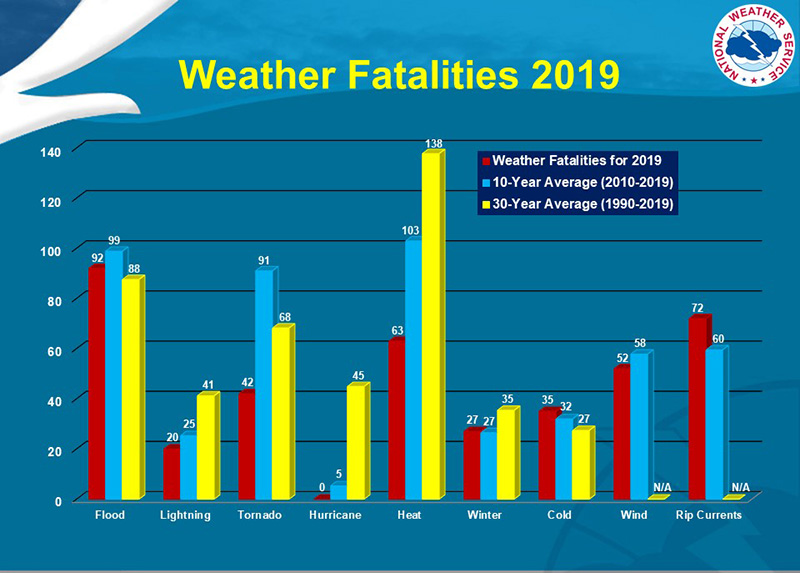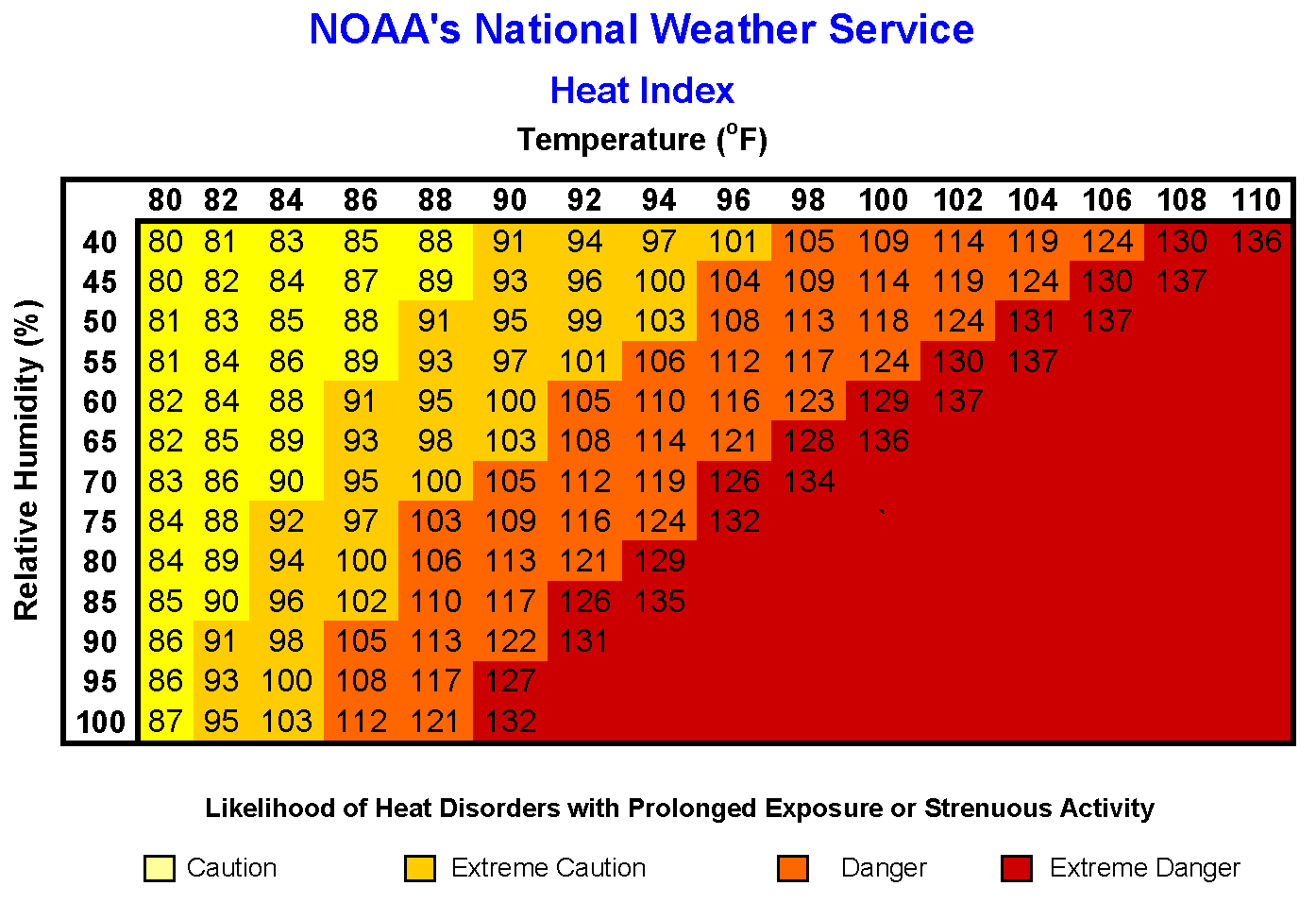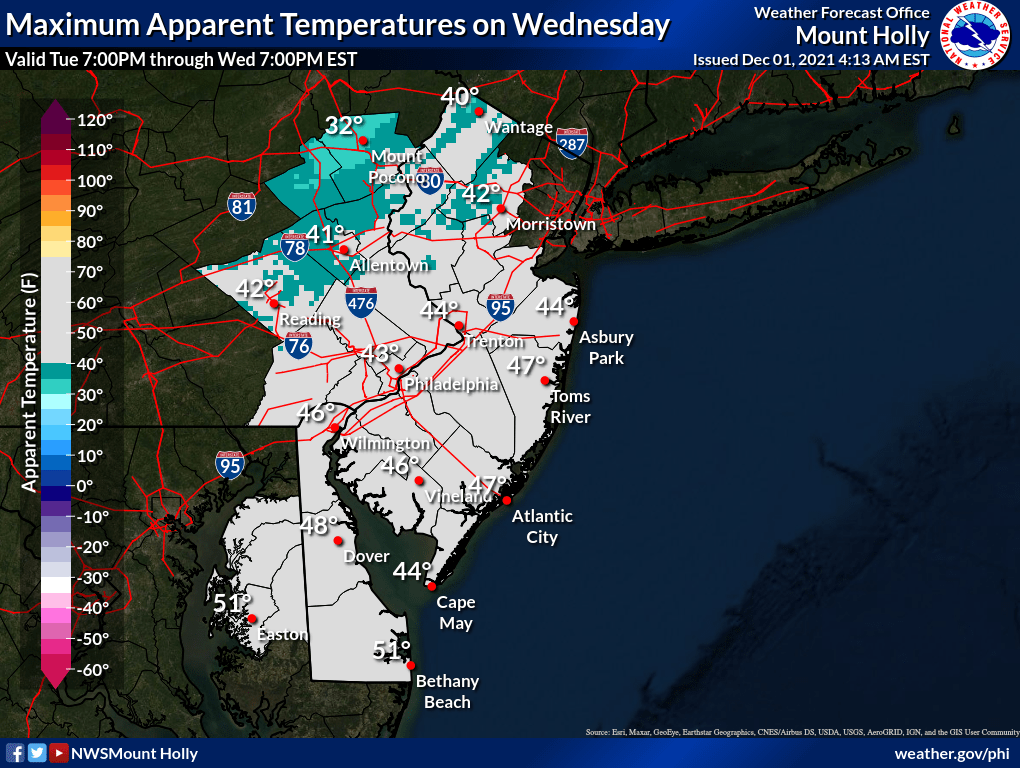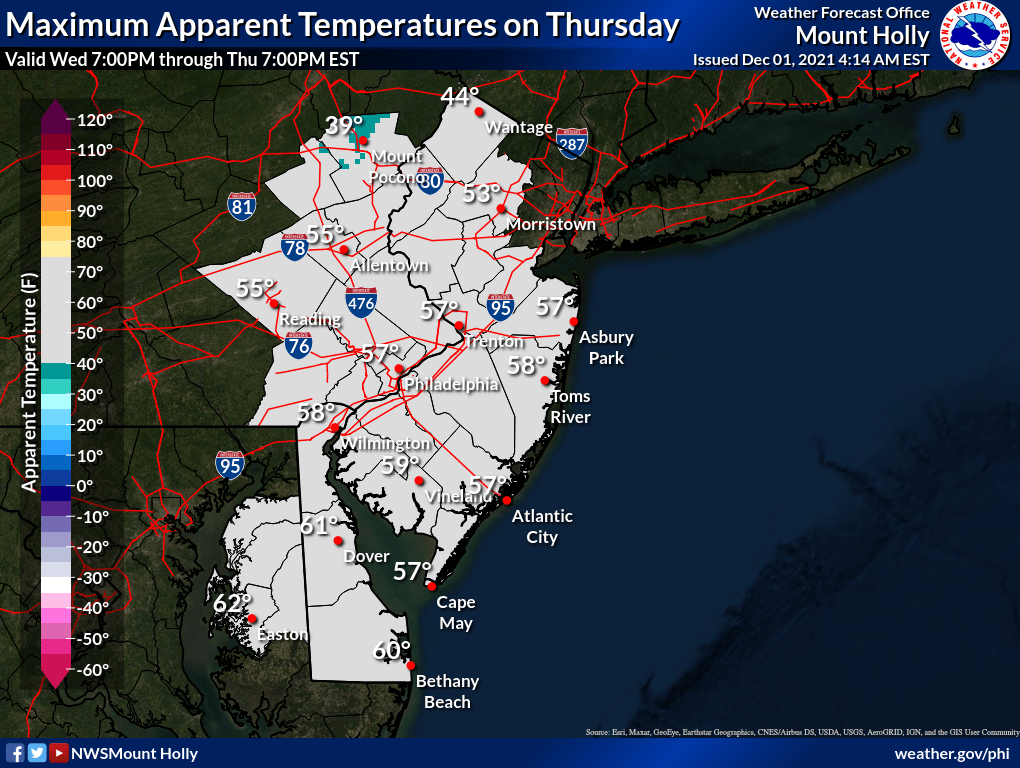Overview | Heat Index | Excessive Heat Products | Preparedness Information
A look at weather fatality statistics (image below) reveals excessive heat is the leading weather related killer in the United States. This is especially true in the urban centers, where population density, the urban heat island, and building construction exacerbate the effects of excessive heat. A combination of high heat and humidity can lead to heat-related illness, including heat cramps, heat exhaustion, and heat stroke. Heat-related illness can occur when the ability of the body to cool itself is challenged, or when there are insufficient levels of fluid or salt in the body due to sweating or dehydration. Heat-related illnesses increase as the combination of temperature and relative humidity increase, but there are other factors involved as well.

The Heat Index (image below), also known as the Apparent Temperature, is a subjective measure of what it feels like to the human body when relative humidity is factored into the actual air temperature. Relative humidity is a measure of the amount of water in the air compared with the amount of water that air can hold at the current temperature. In short, it’s a measure of how close the air is to being saturated with moisture. The body cools itself through the evaporation of perspiration or sweat. However, when the relative humidity is high, the increased moisture content in the air decreases the evaporation of perspiration or sweat. Therefore, the body feels warmer when it’s humid, and this is why we use relative humidity. For example, in the heat index chart below, a hot and very humid air mass with a temperature of 94 degrees and a relative humidity of 45 percent yields an apparent temperature of 100 degrees . Holding the temperature constant and increasing the relative humidity to 60 percent yields an apparent temperature of 110 degrees. Read the Excessive Heat workshop presentation here.

The National Weather Service in Mount Holly issues the following excessive heat products:
Hazardous Weather Outlook for Excessive Heat – A period of excessive heat is possible within the next 3 to 5 days. A heat advisory or excessive heat warning may eventually be needed. Stay informed and be prepared by following the preparedness information on this website in the event excessive heat occurs.
Heat Advisory – Take Action!
A period of excessive heat is expected. The combination of hot temperatures and high humidity will create a situation in which heat related illnesses are possible. A Heat Advisory is issued for the following conditions:
For Eastern Chester, Eastern Montgomery, Lower Bucks, Delaware, and Philadelphia counties in Pennsylvania; Gloucester, Camden, Northwestern Burlington, and Mercer counties in New Jersey; and New Castle county in Delaware:
For Carbon, Monroe, Berks, Lehigh, Northampton, Western Chester, Western Montgomery, Upper Bucks counties in Pennsylvania; Sussex, Warren, Morris, Hunterdon, Somerset, Middlesex, Monmouth, Ocean, and Southeastern Burlington counties in New Jersey:
For Salem, Cumberland, Atlantic, and Cape May counties in New Jersey; Kent and Sussex counties in Delaware; Kent, Queen Anne's, Talbot, and Caroline counties in Maryland:
Excessive Heat Watch – Be Prepared.
A prolonged period of dangerous excessive heat is possible within about 48 hours.
Excessive Heat Warning – Take Action!
A prolonged period of dangerous excessive heat is expected within about 24 hours. The combination of hot temperatures and high humidity will create a dangerous situation in which heat related illnesses are likely. An Excessive Heat Warning is issued for the following conditions:
For Eastern Chester, Eastern Montgomery, Lower Bucks, Delaware, and Philadelphia counties in Pennsylvania; Gloucester, Camden, Northwestern Burlington, and Mercer counties in New Jersey; and New Castle county in Delaware:
For Carbon, Monroe, Berks, Lehigh, Northampton, Western Chester, Western Montgomery, Upper Bucks counties in Pennsylvania; Sussex, Warren, Morris, Hunterdon, Somerset, Middlesex, Monmouth, Ocean, and Southeastern Burlington counties in New Jersey:
For Salem, Cumberland, Atlantic, and Cape May counties in New Jersey; Kent and Sussex counties in Delaware; Kent, Queen Anne's, Talbot, and Caroline counties in Maryland:
 |
 |
| Day 1 Highest Heat Index Values | Day 2 Highest Heat Index Values |
 |
 |
| Day 3 Highest Heat Index Values | Day 4 Highest Heat Index Values |
| Click each image above to view a larger version. | |
The best advice is to drink plenty of fluids, stay out of the sun, and in an air-conditioned place. If you work or spend time outside, take extra precautions, such as frequent rest breaks in shaded or air conditioned locations. Also wear clothing that is light weight and loose fitting. If possible, reschedule strenuous activities for the early morning or evening, when cooler temperatures prevail. Car interiors can reach deadly temperatures in a matter of minutes during hot or warm weather. Never leave young children and pets unattended in vehicles. Anyone overcome by heat should be moved to a cool and shaded location. For more preparedness information, including the signs and symptoms of heat exhaustion and heat stroke, visit the NWS Heat Safety Website or click on the image below.
Questions? Contact Lee Robertson